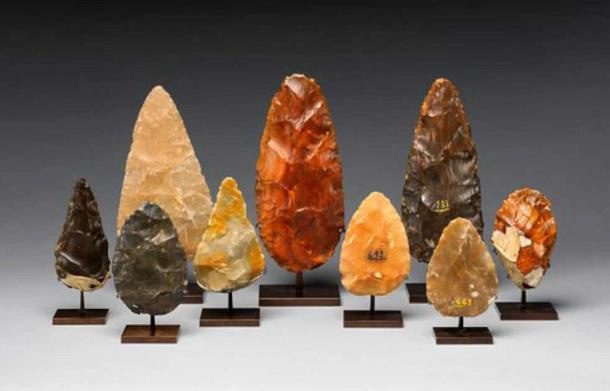Numerous archaeological and geological evidence has recently been discovered, indicating that ancient humans built boats and crossed the Aegean Sea approximately 450,000 years ago.
This occurred long before modern humans evolved and migrated to Europe from Africa. These ancient “sailors” belonged to a different hominin species (most likely Homo erectus), one of the more direct ancestors of Homo sapiens.
The research leading to this intriguing conclusion was conducted by a group of Greek scientists from the Oceanus Laboratory at the University of Patras. Their interest in this question stemmed from the discovery of ancient tools in the Aegean Islands, which stretch across the Mediterranean (the Aegean Sea is a branch of the Mediterranean), separating Europe (Greece) from Asia (Turkey).
These tools are believed to have been created by the Acheulean people – descendants of Homo erectus around 1.7 million years ago. Assuming these tools were left by a long-extinct cousin of modern humans, it appears that Homo erectus settled in the Aegean Islands hundreds of thousands of years before the migration of modern human ancestors.

Homo erectus must have discovered how to create tools for crossing the sea long ago.
However, these lands are islands, meaning they could only be accessed by boat or raft. This implies that Homo erectus – the ancestor of modern humans who disappeared from Earth more than 100,000 years ago – must have discovered how to create tools for crossing the sea long before humans conceived of this idea.
Notably, Acheulean tools related to the sites where Homo erectus was found in Greece and Turkey date back to 1.2 million years ago. Of course, this could have happened if indigenous groups of Homo erectus in the region decided to cross the sea to reach these islands.
“Humans have a penchant for exploring new places, and we know they also had good observational skills. They could see that there were better places to find the resources they needed: food, water, and stone,” said Maria Gkioni, the lead archaeologist of the research team.
In other words, the presence of islands would have provided ancient settlers with a strong motivation to develop floating vehicles that could be used to cross oceans and land on those pristine shores.

Acheulean tools were found at multiple sites in the Aegean Islands
In response to the discovery of Acheulean tools across multiple sites in the Aegean Islands, some scientists proposed an alternative explanation for how these ancient toolmakers arrived there.
They suggested that humans might have walked to these destinations during previous Ice Ages, when sea levels were much lower, and land bridges connecting the islands to the mainland of Greece or Turkey may have risen from the ocean floor yet to be explored.
For the purposes of this research, the Greek scientists from the Oceanus Laboratory decided to examine the feasibility of this theory.
They utilized geological data taken from ancient river deltas in the region to track changes in sea level over the past 450,000 years. They also analyzed the long-term subsidence rate of the Aegean Islands, using theories from plate tectonics to estimate how much these islands would have been higher or lower in the past.
Based on this method, scientists were able to detect geological signs of 5 ancient Ice Ages interspersed with 5 warmer periods. During the harshest periods of these glaciations, sea levels in the region dropped by as much as 225 meters.
Yet, despite these extreme changes, the Aegean Islands remained isolated from the coastlines of Greece and Turkey throughout the past 450,000 years. Observers standing on the beaches of these sites could see the islands in the waters, but they would have no way to walk there unless they could travel on some type of raft or boat.
The undeniable conclusion of this new research is that Homo erectus reached the Aegean Islands by boat or raft at least 450,000 years ago, and possibly much earlier.
“All of this means that this hominid species had advanced cognitive abilities,” said Gkioni. “To cross the sea and colonize an island, you need cooperation, a common language, and complex communication.”

Homo erectus reached the Aegean Islands by boat at least 450,000 years ago.
It is noteworthy that artifacts have been found throughout the Aegean Islands, not just in the locations closest to the Eurasian mainland.
For instance, on the small island off Gavdos, 22 miles (36 km) south of Crete and separated from the larger island by waters up to 1.5 miles (2.5 km) deep, many Acheulean tools have been excavated.
There are even tools found from later cultures associated with modern humans and Neanderthals, indicating that hominin species frequently migrated to the Aegean Islands over hundreds of thousands of years.





















































